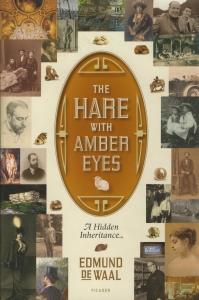Books about Writing Creative Nonfiction
You’re keen to capture wide readership for your nonfiction writing and you’re intrigued by the buzz around “creative nonfiction”—but you’re not clear about what it is. Some believe it relates to writing that’s ‘largely’ nonfiction, jazzed up with some imagined scenes and dialogue, but that’s not the case. Proponents of creative nonfiction challenge us to plumb the depths of our creativity AND stick to the facts.
Your work begins in the research phase, where you collect material that allows you to inject colour, sensation and emotion into your narrative. Collect, analyze and interpret the facts—that’s a given—but also document your own responses to the events, people and places, to put a more personal spin on the subject. That’s a tall order. Here are some books and websites for guidance:
 Creative Nonfiction: Books & a Website to Consult
Creative Nonfiction: Books & a Website to Consult
• Wikipedia has an articulate and succinct definition of what some are calling a new genre: http://en.wikipedia.org/wiki/Creative_nonfiction.
• Keep It Real, Everything You Need to Know about Researching and Writing Creative Nonfiction, edited by Lee Gutkind. There are diverging opinions about this compilation of articles, written by 20 experts. Some of that, I suggest, is quibbling. Do you care if the writers’ names are attached to each article? I like this book as a first introduction because the articles are short-and-sweet, some no more than two or three pages. And the topics range from discussion of the sensitive issue of portrayal of family members, to the use of metaphor, and the “I” as a character. See: http://www.leegutkind.com/books/books-edited-by-lee-gutkind/keep-it-real-everything-you-need-to-know-about-researching-and-writing-creative-nonfiction/. And if you want to know what others think about this book check out: http://www.goodreads.com/book/show/1618765.Keep_It_Real
• Another anthology is Writing Creative Nonfiction, by Carolyn Forche and Philip Gerard. Twenty-seven contributors offer insights on specific topics, from biography and memoir to journalism.
• My favourite book about writing in general is Good Prose, The Art of Nonfiction, by Tracy Kidder and Richard Todd. This Pulitzer Prize winning author and a veteran editor draw upon years of experience and present their views in clear, concise prose. They also offer a personal hook (ala creative nonfiction), inserting the trials and tribulations of their own writing careers.
Life Writing Interpreted for a Wide Audience
- The Danger Tree by David Macfarlane, a Canadian biography that started out as a family history and morphed into an award winning book with broad appeal.
- The Story of Chicago May by Nuala O’Faolain. Here’s a biography of a little-known Irishwoman with whom O’Faolain shared empathetic, if complex, parallel experiences with a century later.
- The Hare with Amber Eyes, A Hidden Inheritance by Edmund De Waal, a memoir that traces the movement of a treasured family inheritance through the generations. Listen to a Eleanor Wachtel’s interview with De Waal on CBC radio: http://www.cbc.ca/writersandcompany/episode/2011/02/13/edmund-de-waal-interview/.
What About a Book That’s Almost Nonfiction?
Take a cue from writers like Jeannette Walls, with a book largely based upon her grandmother’s life, called Half Broke Horses. Walls added imagined scenes and dialogue, openly crossing the line into fiction to give readers more of the emotion and feel for her protagonist’s life than nonfiction would have allowed. This–and others in this crossover vein–are hugely popular. Readers enjoy a work based upon fact, conveyed through the devices of fiction to enhance story engagement. More on the the subject of true-life fiction later.
